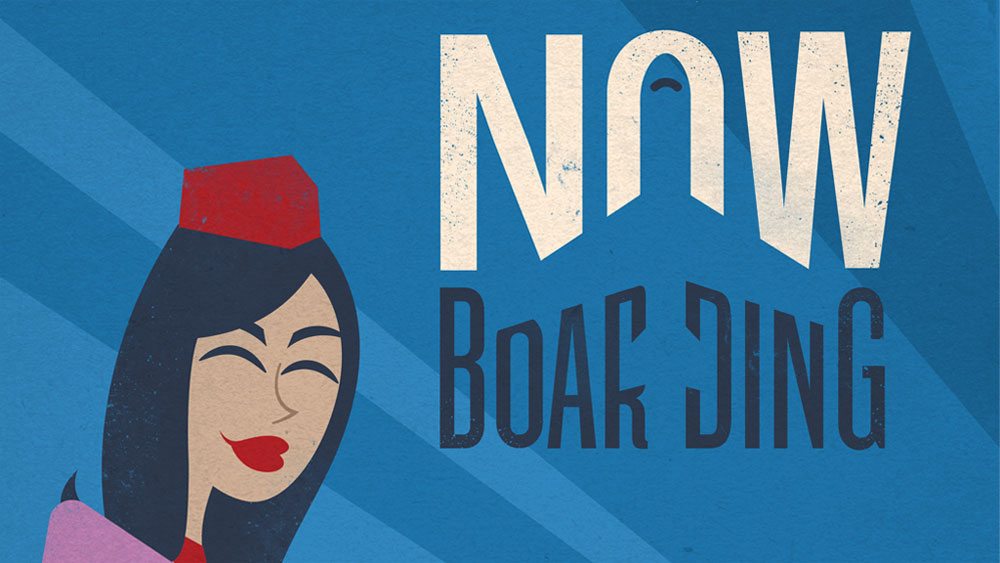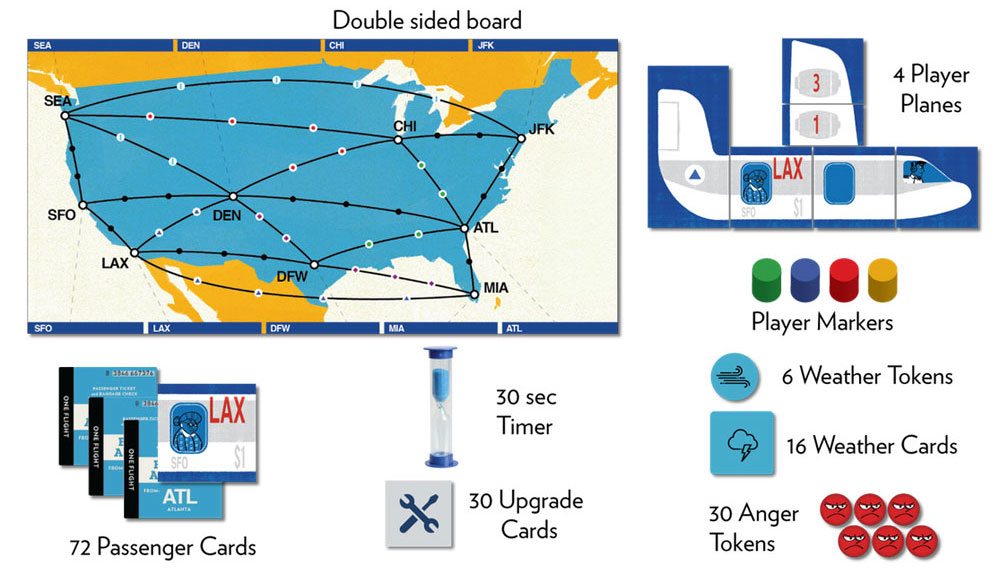The airports are filled with grumpy passengers who have been kept waiting while their flights are getting rerouted all over the country… and it’s your fault. In Now Boarding, you’re in charge of the airlines: can you get everyone where they need to be before your company is crushed under the weight of too many complaints?
What Is Now Boarding?
Now Boarding is a real-time cooperative game from Tim Fowers for 2 to 4 players, ages 10 and up, and takes about 30–60 minutes to play. It’s currently seeking funding on Kickstarter, with a pledge level of $32 for a copy of the game. The game is fast-paced and can be stressful, but there’s nothing that is inappropriate for younger players—except maybe hearing their parents’ complaints about actual airlines.
New to Kickstarter? Check out our crowdfunding primer, and visit our Kickstarter curated page for more projects we love.
Now Boarding Components
- Double-sided game board
- 4 Player planes
- 4 Player markers
- 72 Passenger cards
- 30 Anger tokens
- 30-second timer
- 30 Upgrade cards
- 6 Weather tokens
- 16 Weather cards
Note: My review is based on a prototype so the photos do not reflect final component quality or artwork. The Kickstarter page will have the most updated illustrations. For instance, my copy did not have the player planes, just a simple card that indicated my route, seat, and engine.
The board is double-sided, with a slightly different layout depending on the number of players. With fewer players, there are fewer airports. Each side has a number of airports with dotted routes connecting them. Some of the dots have color/shape icons on them, which indicates that only certain players will fly on those routes. The regular black dots are available to everyone.
The player planes will have different parts of a plane: nose, body, wing, and tail. The nose is just for appearances, but the other pieces indicate what your plane is capable of: how many seats your plane has, which routes it can fly, and how fast it can fly. Upgrade cards will fit in to add seats and engines to your plane.
The passenger cards show an illustration of a person in the plane (so it fits on your player plane), with big bold letters showing their desired destination, with some smaller text showing their origin, and a dollar amount indicating how much you earn if you get them where they want to go. The backs of the cards just show the origin but not the destination.
The artwork on my prototype copy looks pretty bare bones, but Tim Fowers’ games always turn out looking great by the end, with artwork from Ryan Goldsberry, and I expect Now Boarding will look terrific by the time they’re through with it.

How to Play Now Boarding
You can download a draft of Now Boarding rules here.
The Goal
Now Boarding is a cooperative game, so you’ll be working together with other players to deliver all passengers throughout the day without getting so many complaints that you have to shut down the airline.
Setup
Put the board in the center of the table showing the appropriate player count. Give each player a plane, and put their matching player markers on the board at their starting airports. Each player also gets a free upgrade, either an engine (to move faster) or a seat (to carry more passengers). In a 2-player game, each player also gets a route upgrade.
Shuffle the passengers (removing some depending on player count) and give each player a passenger that matches their starting airport—place these passengers face-up in the corresponding origin airports. Then, create three stacks of passengers for morning, afternoon, and evening—the exact count depends on the number of players. Finally, shuffle the weather cards and make stacks for morning, afternoon, and evening—again, number depends on player count. Each pile should have an equal number of good weather and bad weather.
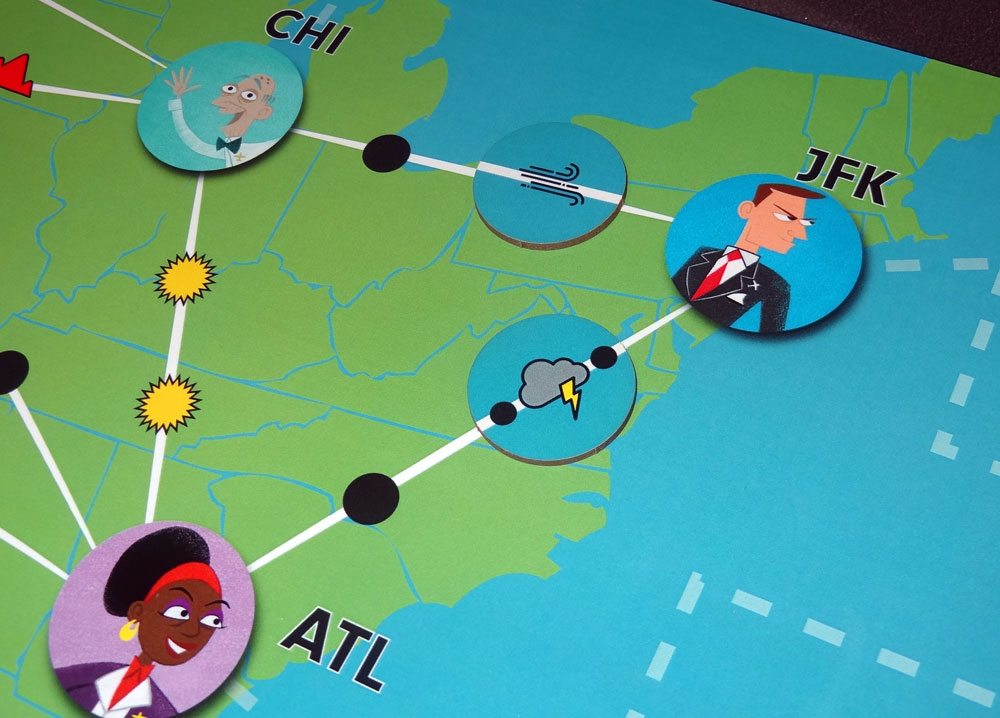
Rounds
The game is played over a series of rounds, with new weather effects at the beginning of morning, afternoon, and evening (which each last a number of rounds). Flip the weather cards to find out which routes will have weather effects: good weather will remove a dot from a route, making that route easier to complete; bad weather adds a dot to the route, making it longer.
Flight Phase
At the start of the round, draw new passengers from the current pile, placing them face-down at their origin airports. You’ll know where there are passengers waiting, but you won’t know where they want to go. Then, everyone has time to discuss plans before the timer is flipped.
When you’re ready, flip the timer, and then reveal all of the face-down passengers. Everyone acts simultaneously, moving, picking up, and dropping off passengers. When the timer is up, everyone stops.
Move: You can move a number of spaces up to your maximum speed (which starts at 3 unless you choose the free engine upgrade). You can pick up and drop off passengers while moving, and you may move on routes that have black dots or that match your route color. You may end your movement for the turn on a route—you don’t have to be at an airport when the time’s up.
Pick up: If you’re in an airport and you have empty seats on your plane, you may pick up passengers there and place them in your plane. If there are any anger tokens on the passenger, they’re discarded (because the passenger is so relieved to finally get on board).
Drop off: If you have passengers in your plane and you arrive at an airport, you may drop off any number of passengers there, even if it’s not their final destination. If it is the final destination, then put the passenger aside in your personal money pile instead of in the airport slot—you’ve earned some money for delivering them.
Since play is simultaneous, players can plan for connections—one player could wait at an airport for another player to arrive with a passenger that they will then pick up and take elsewhere. Note that you cannot transfer passengers from plane to plane directly—you must drop off at an airport, and pick up at an airport.
Maintenance Phase
After the timer is up, there’s a maintenance phase: customers file complaints, and airlines buy upgrades.
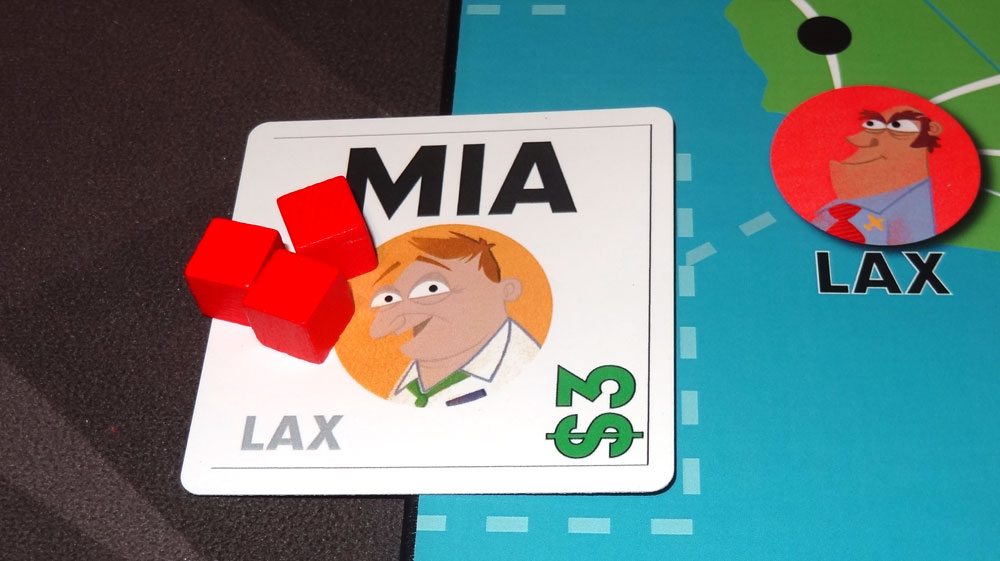
File complaints: Any passenger who’s in an airport gets an anger token. If there are four anger tokens on a passenger, that passenger files a complaint and leaves the airport—put it in the complaints pile. If you have three or more complaints, you lose the game.
Buy upgrades: Using the money you’ve earned from delivering passengers (you have been delivering passengers, right?), you can buy upgrades to your plane: engines (move faster), seats (carry more passengers), and routes (travel on additional colors). Seats and engines get more expensive as you buy more of them. You can’t spend money for somebody else, but you can give money to another player if you’re in the same airport.
There are also two temporary upgrades, a seat and an engine, which cost less than the permanent upgrades. If you buy one, take the card, and then as soon as you’ve used it, you put it back into the supply, where it can be purchased again the next round.
You can buy upgrades after setting out new passengers for the next round if that helps with planning.
Game End
When the evening passengers deck is empty, you’ll have one more round to deliver passengers. There are no new passengers this round, just the ones that are already on board or in airports. At the end of this round, each passenger that has not been delivered is worth half a complaint. You must have fewer than 3 complaints total to win.
Advanced Variants
There are some VIP passenger cards that modify passengers—for instance, passengers that must fly alone, or can’t fly through weather. The VIP cards will be shuffled in a pile face-down. As a group, you decide when you want to take on a VIP passenger—draw a VIP card when placing new passengers at the beginning of the round, and then add the VIP to the last passenger. VIP cards make it just a bit tougher to keep all your passengers happy.
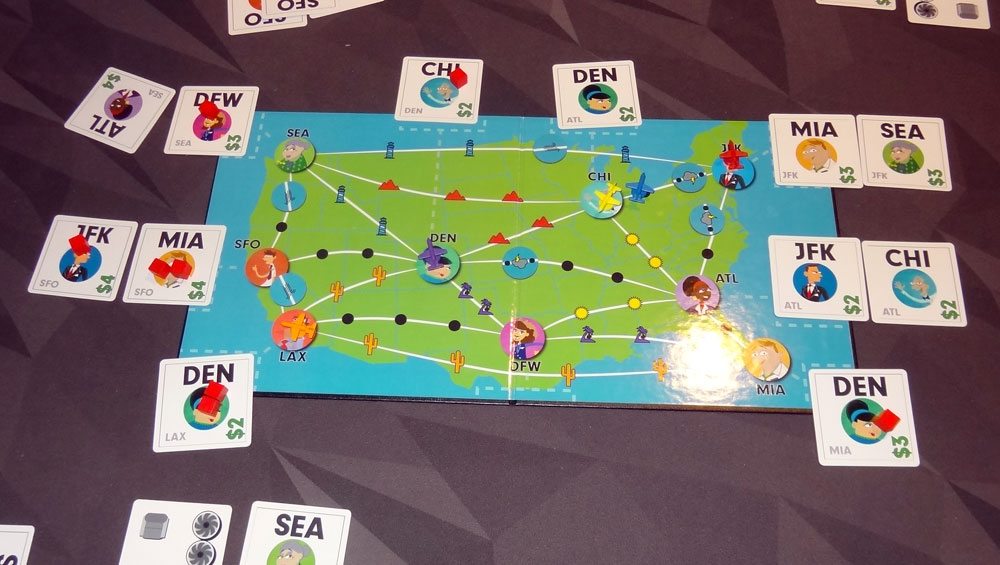
Why You Should Play Now Boarding
Tim Fowers first appeared on my radar (heh, heh) back in 2010 when he self-published a real-time cooperative game called Wok Star. Up until that point, I hadn’t played many real-time games, and I loved the way that it felt like those time-management videogames I liked to play. And there’s good reason for that: Fowers’ first game was a little videogame called Now Boarding, about managing an airline and getting passengers to their destinations before they got angry and filed complaints. Sound familiar? (I played it a bit at the time, and enjoyed it.)
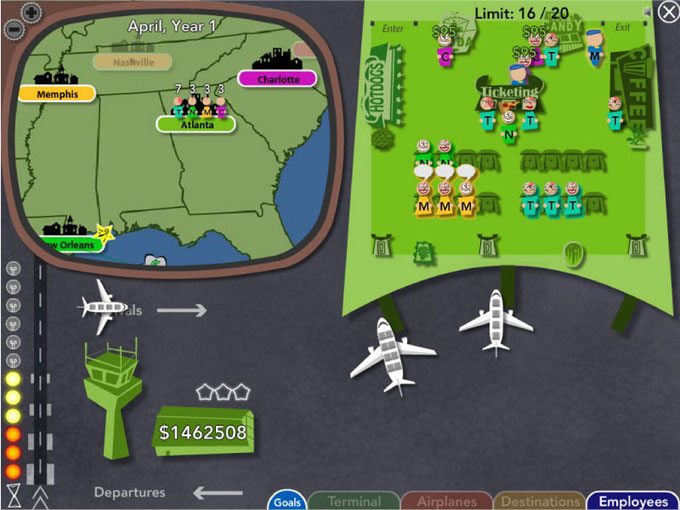
Now, Fowers has brought his videogame to the board gaming world, where real-time cooperative games have really taken off (ahem) in the past few years. One of the great things about real-time games is the way that they can mitigate the Alpha Player problem in cooperative games, where one player drives all the decisions and is essentially playing solitaire with the other players simply acting as extra hands for moving pieces around. When there’s time pressure, you can’t always control everything, and you’ll have to trust people to make their own decisions… and their own mistakes.
In Now Boarding, there’s the added wrinkle that you know where there are new passengers, but you won’t know where they’re going until the timer starts. So you can spend time planning out who’s going to fly to where and drop off which passenger. But as soon as the cards are turned over, you might realize that it makes more sense to take an alternate route, or pick up a different passenger instead. You’ll be making some tough decisions on the fly. With only 30 seconds to wrap up your moves (or 15 seconds in a 2/3-player game), you don’t have much time to talk once things get going.
Of course, the game can still suffer a little from alpha player syndrome during the discussion part of the round, since it’s untimed. One player may take it upon themselves to be the traffic controller, directing everyone to where they should be going. However, because of the unknown passenger destinations, those plans might have to be scrapped anyway. It’s good to have a plan, but it’s even better to be flexible.
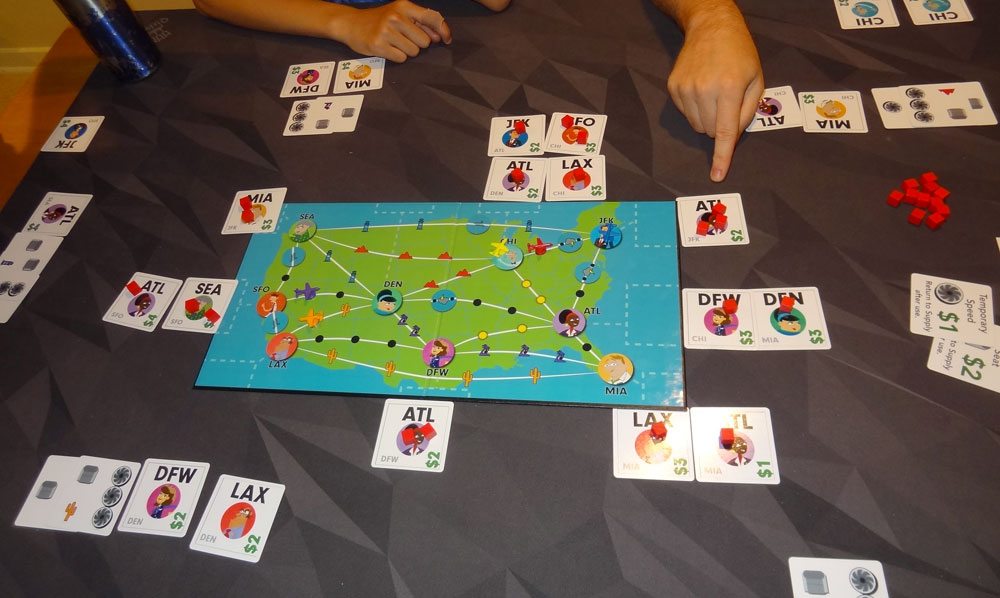
The juxtaposition of 30-second timed phases with longer, untimed discussion phases can seem a little lopsided, and you don’t want the game to drag too long during the discussions. But those 30 seconds really fly by, and as you get more and more passengers later in the day, you’ll really need to use upgrades to move more people faster or you can expect your airline to go out of business in a jiffy.
There are some funny implications—for instance, as long as a passenger is on board, they’ll never get angry. We had one game where a passenger traveling from Seattle to Miami stayed on a plane the entire game, getting a tour of all the airports, before finally being delivered on the very last round, simply because that pilot kept picking up other passengers and changing plans. It also means that you can pick up a passenger who’s steaming mad to make them happy, and then drop them off at another airport for a few turns.
Now Boarding is hectic and crazy, and just about makes you feel some sympathy for the airlines when they leave you stranded without a seat. Almost. It’s an intense blend of logistics and real-time action, and if you’re the sort of gamer who loves making tough choices under pressure, this game will punch your ticket. (Or scan your e-ticket? Hmmm.) On the other hand, if your insides feel a bit, um, turbulent when somebody mentions “real-time” game, then you might want to stand by for now.
For more information or to make a pledge, visit the Now Boarding Kickstarter page.
Click here to see all our tabletop game reviews.
Disclosure: GeekDad received a copy of this game for review purposes.
